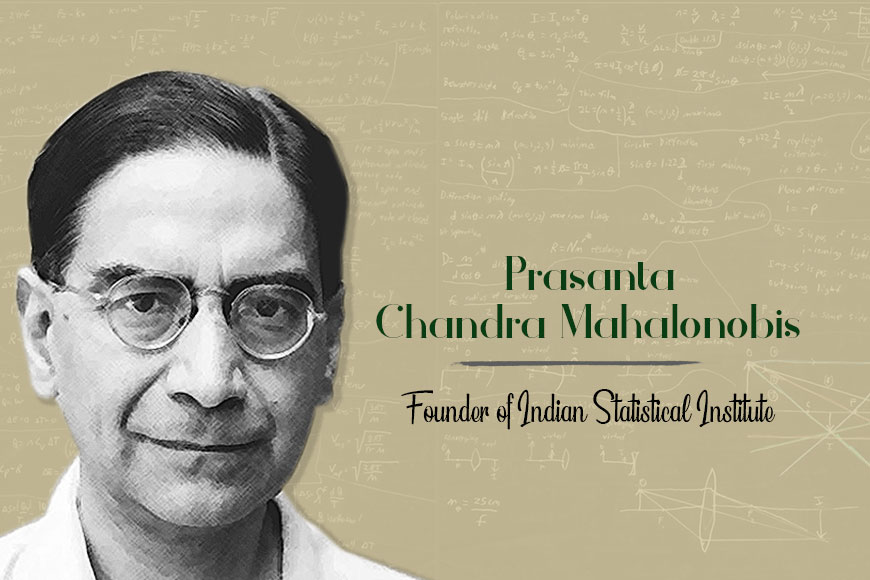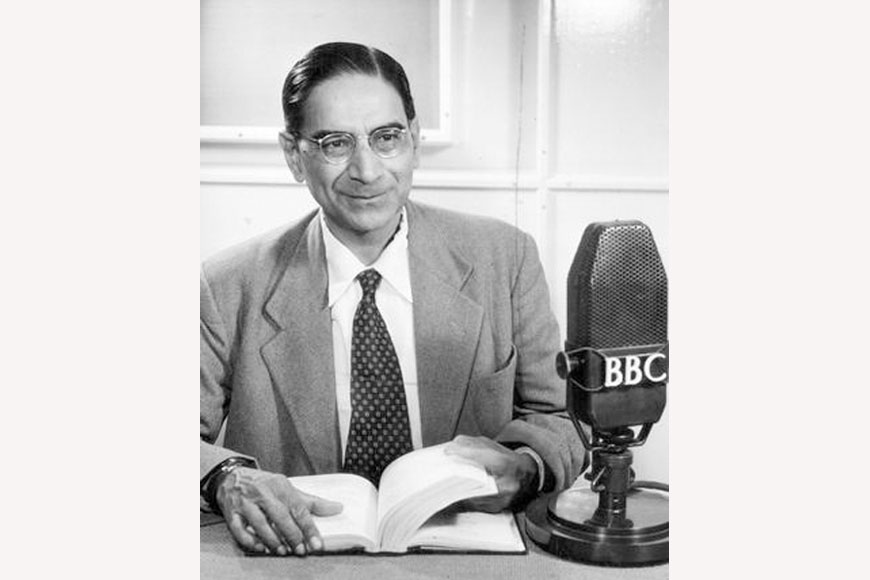Prasanta Chandra Mahalanobis, one of the greatest Indian statisticians

Have you heard of Mahalanobis Distance? Even though most of us are taught in school about the palladium-iridium bar that is the standard of metric measurements, we are hardly taught in our school syllabus about one of the greatest statisticians of India --- Prasanta Chandra Mahalanobis. The Indian Statistical Institute (ISI) of Kolkata that we are really proud of, was founded by this genius. Mahalanobis even played a key role in formulating India’s strategy for industrialization in the Second Five-Year Plan (1956–61). His pioneering studies in anthropometry in India is still taught in different foreign universities.
Born on 29 June 1893, to Probodh Chandra and Nirodbashini Devi, he was the eldest of the couple’s six children. His family was a relatively wealthy and influential one and academically oriented. Quite naturally Prasanta Chandra Mahalanobis was encouraged to pursue his intellectual interests since an early age. After completing his schooling, he went to study at the Presidency College, Calcutta where he had the good fortune of being taught by stalwarts like Jagadish Chandra Bose, Sarada Prasanna Das and Prafulla Chandra Ray. Meghnad Saha and Subhas Chandra Bose were his juniors at college. He graduated with a Bachelor of Science degree with honors in Physics in 1912.
 Father of Indian Statistics
Father of Indian Statistics
Being an outstanding student, he moved to England for higher studies and joined King’s College, Cambridge, where he met eminent Indian mathematical genius Srinivasa Ramanujan and was deeply influenced by him. While in England, Mahalanobis developed an interest in statistics and was fascinated by the idea of how statistics could be used to understand problems in meteorology and anthropology. After completing his education he worked for a while at the Cavendish Laboratory with C. T. R. Wilson. Then he took a break to return to India where he was asked by the Principal of Presidency College to take classes in Physics. But he again returned to England after a short stay in India.
This period in UK was phenomenal as during this tenure Mahalanobis discovered the ‘Biometrika,’ a journal published by Oxford University Press for the Biometrika Trust, which primarily focuses on theoretical statistics. He became fascinated with the subject and was intrigued by the utility of statistics in understanding problems in meteorology and anthropology. Back to India in 1922, he was appointed as Professor of Physics at Presidency College and kept pursuing his interest in Statistics. He found a mentor in Acharya Brajendra Nath Seal who encouraged his pursuits in Statistics. Initially, Mahalanobis began working on analyzing university exam results, anthropometric measurements on Anglo-Indians of Calcutta and some meteorological problems.
After returning to India, he teamed up with a group of like-minded colleagues to form the Indian Statistical Institute (ISI). As a statistician he made several remarkable contributions to the field and was instrumental in formulating newly independent India’s strategy for industrialization. He also had many colleagues who were equally passionate about statistical studies. With them, he first set up a Statistical Laboratory in his room at the Presidency College, Calcutta. The formation of this group eventually led to the establishment of the Indian Statistical Institute (ISI) which was formally registered in 1932.
Mahalanobis was instrumental in developments related to large-scale sample surveys. He is credited with the introduction of the concept of pilot surveys and his early surveys which began between 1937-1944 included topics such as consumer expenditure, tea-drinking habits, public opinion, crop acreage and plant disease. In 1948, ISI received a major grant from the Indian government which allowed them to set up a separate Research and Training School. The institute continued to flourish under Mahalanobis’ leadership.
Renowned for his statistical achievements all over the world, he also held several prestigious international positions, including a stint as the chairman of the United Nations Sub-Commission on Sampling from 1947 to 1951. He established the National Sample Survey in 1950 and also set up the Central Statistical Organization to coordinate statistical activities in India. He became a member of the Planning Commission of India in 1955 and remained a member till 1967. In this position, he helped to formulate strategies to aid the development of heavy industry in India as a part of the Second Five-Year Plan.
Surprisingly, this genius died on 28 June 1972, a day before his 79th birthday. And when today, on his birthday that is celebrated in India as the Statistical Day we remember him, we realise Mahalanobis probably need to be remembered by the younger generation more and more to take his legacy forward.










